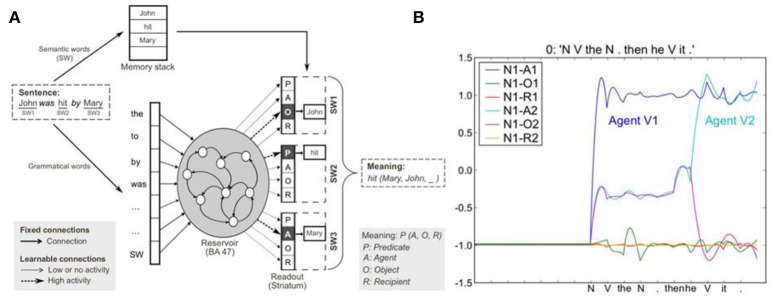Figure 3.
Sentence comprehension model. (A) Grammatical construction processing in the reservoir framework. Semantic and grammatical words (i.e., open and closed class words, respectively) are separated on input. Semantic words (SW) are stored in a memory stack. Grammatical words and a single input for all SWs are inputs to the reservoir (analogous to prefrontal cortex area BA47). During training, input sentences are presented word-by-word, and readout units (corresponding to striatum) are forced to the corresponding coded meaning (i.e., SW1-Object, SW2-Predicate, SW3-Agent). In testing, readout units code the predicted role(s) of each semantic word, forming the coded meaning. The meaning [i.e., hit(Mary, John, _)] can be reconstructed from the coded meaning, as SWs in memory stack are reassigned to the thematic roles (predicate, agent, object, recipient) identified in the read-outs. (B) Activation of readout neurons coding the semantic role of the first noun (N1) in the mini-discourse “John threw the boomerang. Then he caught it.” The readout neurons indicate that the first noun, John, is the agent of action 1, and the agent of action 2 (from Hinaut and Dominey, 2013).

